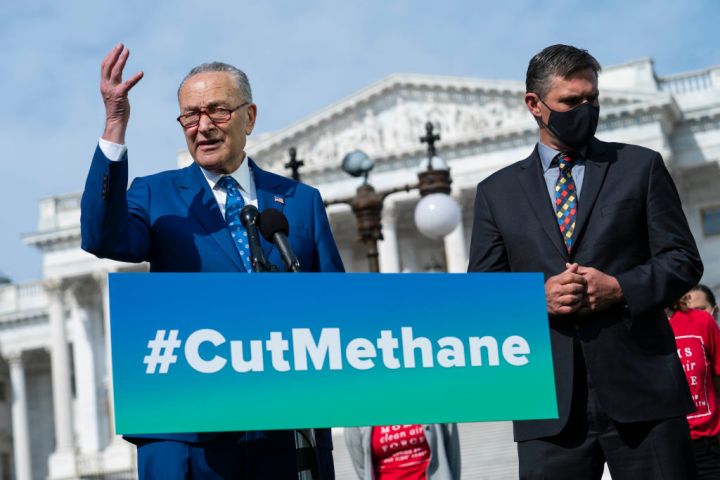
Thirty countries agree to methane emissions cuts to protect the climate
Thirty countries agree to methane emissions cuts to protect the climate

When we talk about emissions that lead to global warming, we’re usually talking about carbon emissions – mostly carbon dioxide.
This week, 30 countries signed a global pledge to tackle a different greenhouse emission: methane gas. It’s the second-biggest contributor to climate change after carbon dioxide. And pound for pound, it traps heat 28 times better.
The signatory nations promised to cut their emissions by 30% by the end of the decade. Scientists say moves like that may be the quickest way to slow global warming.
Twenty years ago, scientists weren’t all that worried about methane emissions.
“We had this prediction that CO2 was going to go way up if we didn’t do anything, but methane was kind of stable,” said Drew Shindell, professor of earth sciences at Duke University.
He said they were right about CO2, but then methane emissions started going way up, too. The biggest culprits?
“Cows, landfills and the fossil fuel sector.”
Cows, along with goats and sheep, release methane when they burp and … other times. Landfills release methane when people toss food into the garbage and it rots.
And the whole oil and gas supply chain leaks methane, said Sarah Smith at the Clean Air Task Force.
“All the way from the wellhead, where gas and oil is produced, through the transmission and storage segments of the industry. Small leaks, big venting plumes, flares,” she said.
And because methane is more potent than carbon dioxide, it is warming the planet faster.
So – if methane emissions keep rising?
“It will drive us very quickly above the critical thresholds that we’re trying to keep global warming below,” said David Waskow, director of the International Climate Initiative at the World Resources Institute. He said the good news is that methane leaves the atmosphere a lot faster.
“Carbon dioxide will stick around for centuries, methane is about a 12-year time in the atmosphere,” he said.
So, reducing methane emissions can do more to slow global warming in the short term. And, reducing them in the fossil fuel industry is low-hanging fruit, said Sarah Smith at the Clean Air Task Force.
“It’s not rocket science to clean up these emissions. It’s really simple plumbing that involves finding and fixing the leaks,” she said.
Reducing CO2 emissions is still the most critical thing in the long term, Smith said. Reducing methane emissions in the short term will buy us time to do that.
There’s a lot happening in the world. Through it all, Marketplace is here for you.
You rely on Marketplace to break down the world’s events and tell you how it affects you in a fact-based, approachable way. We rely on your financial support to keep making that possible.
Your donation today powers the independent journalism that you rely on. For just $5/month, you can help sustain Marketplace so we can keep reporting on the things that matter to you.

















